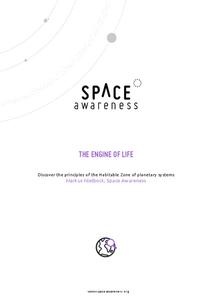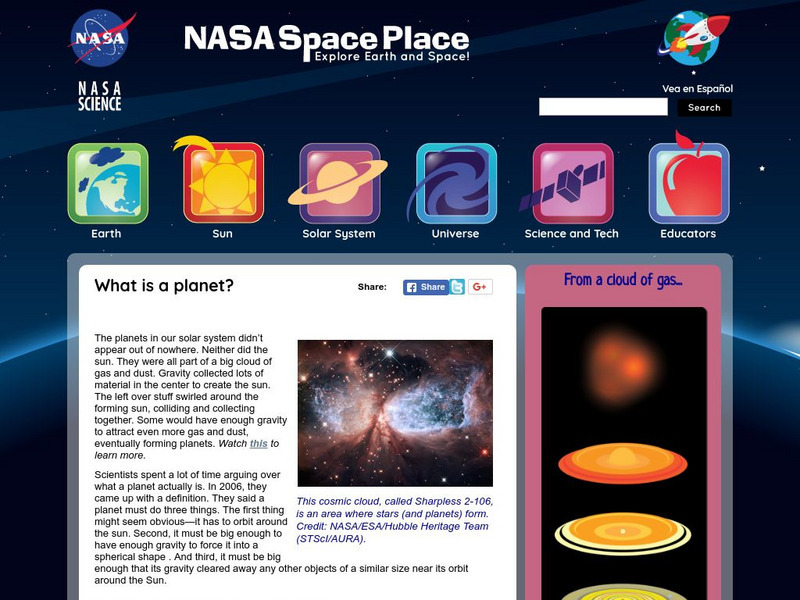NASA
Exploring Exoplanets with Kepler
Calculate the movement and properties of planets like professional astronomers! Scholars use Kepler's third law to find Mercury and Venus's distance from the sun. Using changes in brightness of distant stars and Kepler's third law,...
Las Cumbres Observatory
Agent Exoplanet
Not everything revolves around the sun! Believe it or not, there are planets, called exoplanets, that orbit stars other than our sun. Learners use an interactive online resource to research several of these planets. They learn about the...
PBS
Data Plots of Exoplanet Orbital Properties
Scientists discovered the first exoplanet in 1995 and by early 2018, they confirmed the existence of more than 3,700—that's a lot of data! As part of the PBS 9-12 Space series, scholars interpret data about exoplanets. They compare...
PBS
Analyzing Light Curves of Transiting Exoplanets
Scientists detected exoplanets by measuring how the brightness of stars changed over time. Young astronomers interpret and analyze the same data that led to exoplanet discoveries. They learn to apply light curve graphs and connect the...
PBS
Light Curves of Kepler's First Five Discoveries
The Kepler missions discovered and confirmed more than 2,650 exoplanets to date. A video shares the data from the first five discoveries. It provides graphs and diagrams to put each discovery in perspective to help scholars discuss the...
PBS
Exoplanets through Kepler’s Laws
The majority of all confirmed exoplanets relied on Kepler's laws to discover their locations. Scholars learn how to apply Kepler's laws and then practice using data to discover exoplanets. They benefit from NASA video footage, NOVA...
Space Awareness
The Engine of Life
There is a specific zone, or distance from a star, that a planet must be in order to have water in a liquid form. The activity demonstrates how flux density depends on its distance from the source. A photovoltaic cell gets power to...
BBC
Bbc Newsround: Top 5 Amazing Space Discoveries
Read about some of the most important space discoveries in recent times.
Other
Aaas Science News: Week of 2 24 14: Europe to Launch Hunt for Exoplanets
Article reports on the European Space Agency's upcoming program to search for exoplanet in space.
TED Talks
Ted: Ted Ed: 3 Planets That Shouldn't Exist
Scishow explores several exoplanets whose features suggest that they shouldn't even have been able to form in the first place! [5:06]
NASA
Nasa: Space Place: What Is a Planet?
Explore our solar system's planets- more specifically what planets are made of, and how they are formed.
CK-12 Foundation
Ck 12: Earth Science: Exoplanets
[Free Registration/Login may be required to access all resource tools.] Describes the features of exoplanets.
CK-12 Foundation
Ck 12: Earth Science: Exoplanets
[Free Registration/Login may be required to access all resource tools.] Describes the features of exoplanets.
Harvard University
Micro Observatory Robotic Telescope Network: Explore the Universe
This website introduces you to the MicroObservatory Robotic Telescope Network operated by the Harvard-Smithsonian Center for Astrophysics. Links and resources for both teachers and students are included.
Khan Academy
Khan Academy: Gallery: Earth & Solar System
A gallery of pictures of the cosmic beauty of the Sun, our Solar System, and exoplanets. Pictures include a caption of what the viewer is looking at.
CK-12 Foundation
Ck 12: Earth Science: Other Celestial Bodies Study Guide
Review celestial bodies using this study guide.
Australian Broadcasting Corporation
Australian Broadcasting Corporation: News in Science: Astronomers Find 28 More Exoplanets
From ABC News in Science, Maggie Fox's article explores a new string of "exoplanets" discovered orbiting distant stars. This research leads to numerous possibilities, one of which being the existence of planetary systems containing life...

















